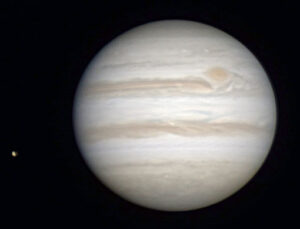Special to CosmicTribune.com, October 16, 2023, 2023
Excerpts from weekly Sky&Telescope report.
SUNDAY, OCTOBER 15
■ Now that it’s mid-October, Deneb has replaced Vega as the zenith star after nightfall (for skywatchers at mid-northern latitudes).
MONDAY, OCTOBER 16
■ The Great Square of Pegasus is now high in the east-southeast after dark.

TUESDAY, OCTOBER 17
■ Look for bright Capella sparkling low in the northeast these evenings. Look for the Pleiades cluster about three fists at arm’s length to its right. These harbingers of the cold months rise higher as evening grows late. Watch for Aldebaran to come up below the Pleiades.
Upper right of Capella, and upper left of the Pleiades, the stars of Perseus lie astride the Milky Way.
WEDNESDAY, OCTOBER 18
■ This is the time of year when soon after nightfall, W-shaped Cassiopeia stands on end (its fainter end) halfway up the northeastern sky.
THURSDAY, OCTOBER 19
■ By late evening the Great Square of Pegasus is getting very high in the southeast — and it’s tilting clockwise off of one corner to lie more level like a square.
FRIDAY, OCTOBER 20
■ The Moon, a day short of first quarter, shines low in the south right at the end of twilight.
SATURDAY, OCTOBER 21
■ First-quarter Moon (exact at 11:29 p.m. EDT).
■ The Orionid meteor shower should be near its peak tonight. The good Orionid-watching hours are from about 1 a.m. to the first light of dawn Sunday morning. The Moon will have set. This shower is a modest one; in a very dark sky you might see 8 or 10 meteors per hour. The shower’s radiant is in the east at Orion’s dim club, between Betelgeuse and the feet of Gemini.

You must be logged in to post a comment Login